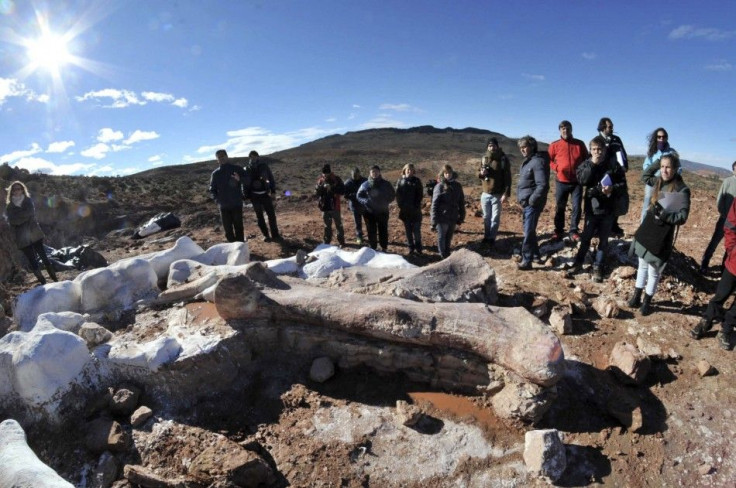Gigantic 'Dinosaur Remains' Found in Argentina [PHOTO]

Argentine paleontologists have discovered fossilized remains of a long-necked, herbivore dinosaur known as sauropod. Scientists said its type is touted as the largest land creatures in history to walk on the Earth.
Based on the unearthed thigh bones, the prehistoric creature stands 65 feet tall, extending up to 130 feet long and weighs an estimated 85 tons. "Given the size of these bones, which surpass any of the previously known giant animals, the new dinosaur is the largest animal known that walked on Earth," the scientists told the BBC.
Paleontologists Jose Luis Carballido and Diego Pol and the whole team who unearthed the recent discovery theorized the bone belonged to a new species of titanosaur, a herbivorous member of the sauropaud dinosaurs. It's also noted as the smallest of the sauropaud family called diplodocids, which lived in North America.
Argentine Paleontologist Pablo Gallina said it's the first of its kind found in South America. It lived 140 million years ago, more years than what scientists had previously thought their kind had disappeared.
According to scientists, sauropauds have long neck and tails, huge bodies and pillar-like legs. Their hind legs were longer than the front legs. They used their extremely long necks to reach tall trees and plants for food, while their whip-like tails to fend off pursuing predators. Its kinds lived in a semi-dry environment.
The dinosaur doesn't have an official name yet. Paleontologists said the dinosaur "will be named describing its magnificence and in honor to both the region and the farm owners who alerted us about the discovery," Mashable reported.
Dr. Paul Barrett, dinosaur expert from London's Natural History Museum, said the animal's overall proportions are only estimates without its complete skeleton.
'Biggest dinosaur ever' discovered in Argentina http://t.co/twuOBNyC1W pic.twitter.com/WzhS5MobYv — BBC News (World) (@BBCWorld) May 17, 2014





